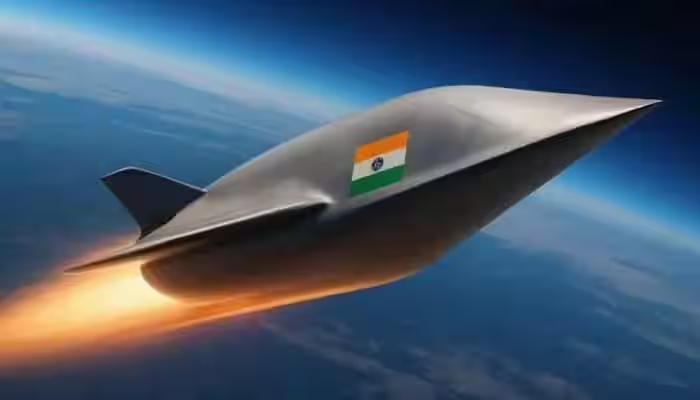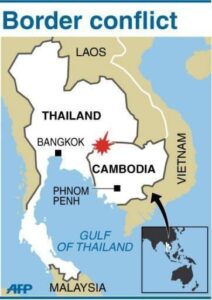India is on the verge of a historic defence breakthrough with the upcoming test of Dhvani, a next-generation hypersonic missile. This will place India among a select group of nations with hypersonic strike capability, significantly boosting its deterrence and strategic posture.
1. Background & Context
Hypersonic weapons = Missiles that can travel at speeds greater than Mach 5 (five times the speed of sound).
Countries with developed hypersonic tech: USA, Russia, China (India preparing to join).
India has already tested HSTDV (Hypersonic Technology Demonstrator Vehicle), laying the foundation for Dhvani.
Dhvani is expected to undergo testing by end of 2025 and possible deployment by 2029–30.
2. Technical Features of Dhvani
Type: Hypersonic Glide Vehicle (HGV).
Design:
Length: ~9 metres | Width: ~2.5 metres.
Blended wing-body design for aerodynamic efficiency.
Heat Protection:
Uses ultra-high-temperature ceramic composites.
Survives 2,000°C–3,000°C during atmospheric re-entry.
Stealth: Angled surfaces reduce radar visibility → harder to detect/intercept.
3. Strategic Advantages
Speed: Travels faster than Mach 5.
Manoeuvrability:
Can perform sharp, unpredictable turns.
Avoids interception by missile defence systems.
Range: Estimated 6,000 – 10,000 km (double the Agni-5’s reach).
Versatility: Can carry conventional as well as nuclear warheads.
4. Impact on Regional Security
Pakistan:
Relies mainly on conventional ballistic missiles.
Dhvani creates a major technological gap in India’s favour.
China:
Already fields hypersonic systems like DF-ZF.
India’s entry reduces the asymmetry with Beijing.
South Asia Security:
Strengthens deterrence.
Enhances regional stability by discouraging aggression.
5. Global Context
Russia: Avangard Hypersonic Glide Vehicle.
China: DF-ZF (operational).
USA: Developing Dark Eagle & HACM.
India: Achieving hypersonic tech indigenously, boosting Atmanirbhar Bharat (self-reliance) in defence.
6. Strategic Significance for India
Defence Posture: Counters advanced missile defence systems.
Power Projection: Extends India’s strike capability far beyond South Asia.
Geopolitics: Enhances India’s credibility in global security forums.
Technology Leadership: Indigenous R&D makes India a leader among emerging powers.
7. Future Prospects
Operationalisation: By 2029–30.
Expansion: Development of hypersonic variants for:
Anti-ship warfare.
Precision strikes.
Nuclear deterrence.
Strategic Messaging: Sends a signal of India’s technological progress and defence readiness to global powers.
8. UPSC Relevance
GS Paper II (International Relations) → India’s regional security dynamics.
GS Paper III (Security & Defence Technology) → Defence R&D, Atmanirbhar Bharat.
Essay → “Hypersonic technology and future of warfare”.
✅ In Summary:
Dhvani represents a transformational leap in India’s defence capabilities, combining speed, stealth, manoeuvrability, and precision. It bridges the technological gap with global powers and strengthens India’s security posture in an evolving geopolitical environment.
FAQs on Dhvani – India’s Hypersonic Missile
Q1. What is Dhvani missile?
Dhvani is India’s upcoming hypersonic glide vehicle (HGV) missile capable of traveling faster than Mach 5 with high manoeuvrability and stealth.
Q2. When is Dhvani expected to be tested and deployed?
First test: By end of 2025
Likely operational deployment: 2029–30
Q3. What makes hypersonic missiles like Dhvani significant?
They combine extreme speed, unpredictable manoeuvres, and stealth, making them nearly impossible for existing missile defence systems to intercept.
Q4. What is the estimated range of Dhvani?
Between 6,000 km and 10,000 km, nearly double that of Agni-5.
Q5. How does Dhvani strengthen India’s security?
Creates a technological edge over Pakistan.
Reduces the gap with China’s hypersonic programme.
Enhances strategic deterrence and regional stability.
Q6. What is the global context of hypersonic weapons?
Russia: Avangard HGV (operational).
China: DF-ZF HGV (operational).
USA: Dark Eagle, HACM (under development).
India: Dhvani (indigenous, upcoming).
Q7. What materials are used to withstand extreme heat in Dhvani?
It uses ultra-high-temperature ceramic composites that can survive 2,000°C–3,000°C during re-entry.
Q8. What are the strategic roles of Dhvani?
Nuclear deterrence.
Anti-ship capability.
Long-range precision strike.
Q9. Why is Dhvani important for UPSC preparation?
It is relevant for:
GS Paper II – International Relations (India-China-Pakistan security dynamics).
GS Paper III – Science & Technology, Defence, Atmanirbhar Bharat.
Essay – “Future of Warfare” / “Indigenous Defence Technology”.
Q10. How does Dhvani showcase India’s self-reliance?
The missile is largely indigenous, developed after HSTDV trials, marking a milestone in India’s journey towards Atmanirbhar Bharat in defence technology.






